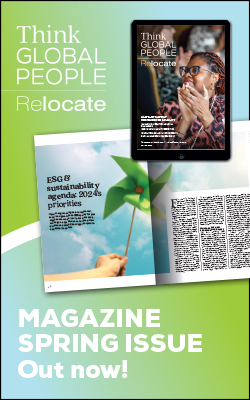Santa Fe reflects on top ten mobility trends of past ten years
Global relocation management company Santa Fe draws on its award-winning research to look to the future of global mobility. It concludes that to succeed, global mobility functions must evolve at pace.

Related reading from Relocate Global
- Peter Graham, Group Director of Visa & Immigration Services, Santa Fe Relocation, speaks to Fiona Murchie of Relocate Global
- Think Global People Autumn 2021 issue – out now!
- New travel management tech responds to post-Covid trends
Top ten global mobility trends of the past decade
Santa Fe Global’s latest report highlights the top ten global mobility trends of the past ten years and predicts what’s ahead for global mobility.Transformation
- A regional approach to global mobility delivery
- Change in skillset of global mobility expertise towards the strategic/advisory
- Data analytics and technology as enables of global mobility functions
Talent
- Increased diversity of global mobility policies and assignment types
- Growth of remote and hybrid working options
- Shift from employer- to employee-driven programmes
- Integration of equality, diversity and inclusion (ED&I)
Compliance
- Compliance complexity of new destinations
- Impact of geopolitical and protectionist climates on immigration and security issues
- The importance of duty of care
Predictions for the future of global mobility from Santa Fe
In the context of 80% of respondents consistently reporting that the career paths of people who undertake global assignments outperform those who stay in their home territory, the report makes a number of projections for where the function will be in another ten years.For transformation, this includes global mobility being integrated into other people-focused parts of the business where it is not standalone and an increasing accent on AI skills.For talent, these include a move from segmented to personalised approaches to assignment packages, blind selection integrated into recruitment and selection to support ED&I and an increase in flexible and part-time assignments For compliance, ESG will be at the core of the global mobility programme, with sustainable assignments a mandatory expectation or requirement of stakeholders. Santa Fe also foresees a continuation of talent mobilisation from developing markets to more developed markets.Global mobility – a new era
“There has been considerable evolution in the talent agenda and how it has translated into Global Mobility policy strategy within the past decade,” the report concludes.“It is evident that internal company talent priorities, combined with external factors (future workforce/digital innovation), will force mobility functions to rapidly adjust to the new era of mobility.”Follow for more international assignment news and features from Relocate Global
Subscribe to Relocate Extra, our monthly newsletter, to get all the latest international assignments and global mobility news.Relocate’s new Global Mobility Toolkit provides free information, practical advice and support for HR, global mobility managers and global teams operating overseas.
 Access hundreds of global services and suppliers in our Online Directory
Access hundreds of global services and suppliers in our Online Directory©2024 Re:locate magazine, published by Profile Locations, Spray Hill, Hastings Road, Lamberhurst, Kent TN3 8JB. All rights reserved. This publication (or any part thereof) may not be reproduced in any form without the prior written permission of Profile Locations. Profile Locations accepts no liability for the accuracy of the contents or any opinions expressed herein.




























